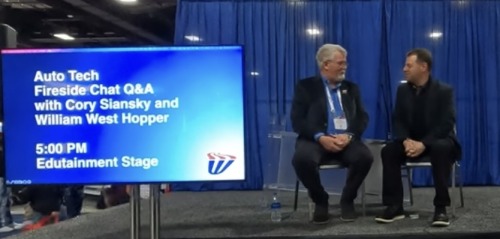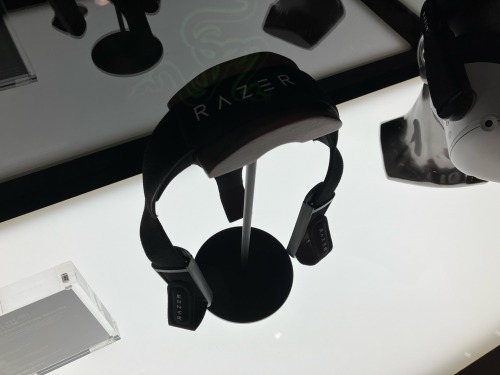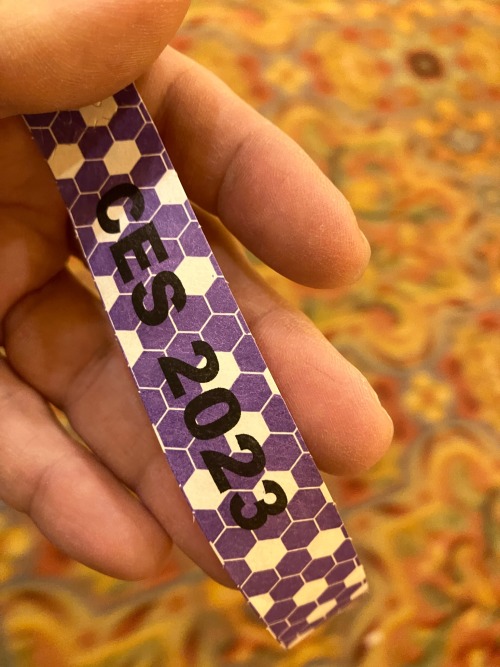24th
2024
Unveiling the Future: 5 Key Takeaways from CES 2024
The first publication of this article was in the German business and tech journal Marketing Scout, and can be found here: https://www.marketingscout.com/trends/ces-2024-publicis-sapient-erlaeutert-die-wichtigsten-tech-trends-fuer-verbraucher/. The English language version in which it was originally written is shown below for reader convenience.
The Consumer Electronics Show (CES) is a hub of technological innovation. From the omnipresence of AI to the rise of autonomous robots, home-based health tech, and other groundbreaking innovations, CES offered a glimpse into a future where technology is increasingly integrated into our daily lives. As my 17th consecutive CES draws to a close, here is a rundown of the broad themes I saw, heard, and frequently discussed with fellow attendees in Las Vegas at what is often billed as the world’s largest trade show.
1. AI is everywhere. AI will undoubtedly change the world. We should all keep our expectations in check, though: not all AI is created equal. Keeping in mind that everything that might possibly be called AI will be labeled as AI, frustratingly for the lay consumer there is no industry convention to discern machine learning from adaptive automation from full blown original thinking by a machine. In short, some AI is very sophisticated and intends to burrow into your life. Other AI is little more than a learning thermostat. However, on the packaging, they both will say the same thing: “Powered by AI.” From the perspective of the Consumer Technology Association (CTA), the trade group behind CES, explaining these distinctions to the masses is important, but probably best left to another day. For now, attendees seemed thrilled to have a new technology on the scene that genuinely delivers and has captured consumers’ imagination.
2. Robots are coming to help. Really. New this year were autonomous street sweepers that can self-fuel, take out their own trash and fill up their own water tanks. Also, fully autonomous robot baristas and bartenders. I didn’t try it myself, but a fellow convention-goer said her robot crafted-and-delivered latte was “excellent.” Next up were improved lawn and pool maintenance bots, security drones to monitor your property and recharge themselves without human intervention, and other robots tasked to sort mixed recyclables—but not before diligently emptying the drips from almost-empty cans or bottles that humans left behind. As pointed out in prior years, we humans can’t be relied upon to triple rinse.
3. Health tech is bringing versions of gear from your doctor’s office to your home. Seen on the CES floor this year were home-based: miniature urine lab appliances, respiratory monitors, devices to detect early signs of neuromuscular biomarkers, incontinence management systems, asthma management platforms, and a digital home stethoscope that your doctor can listen to remotely. If you’re in need of a blood draw, your new laser lancer device can make that process safe, pain-free and leaves behind the fear of error a distant memory. And that’s in addition to AFib detection and pulse oximeter capabilities that may already be in your smart watch.
4. CES is a car show, too, and that’s here to stay. The latest trends in automobile design—the term “software-defined vehicles” is central to this new way of thinking—mean that your car might be better compared with your smartphone than the station wagon you rode in the ‘way back’ as a kid. Increasingly cars will take advantage of over-the-air updates, power up opportunistically when you have access to a charger (whether that’s a full battery electric or hybrid drivetrain) and provide a driver/user experience centered on apps that you can collect or discard over time. Safety features are being added at a rapid clip, including several that use LiDAR to detect pedestrians, cyclists, and other road hazards. That same LiDAR telemetry is core to several driver assistance capabilities now, and eventually will be leveraged by self-driving vehicles, too. Level 5 autonomy isn’t here yet, but the industry is working on it. And when the open road calls, the latest auto campers will automatically connect themselves to your car’s trailer hitch in a docking procedure akin to a SpaceX Dragon capsule-to-ISS rendezvous.
5. AI took center stage, but there are other major innovations worth noting. Both Samsung and LG debuted transparent OLED TVs with eye-popping color and top-notch resolution. Speaking of resolution, your new TV isn’t waiting around for 8K content to materialize through your cable provider or streamer: your Samsung Tizen display will dynamically upscale existing content on the fly with magnificent results. Sustainability permeated every category of the show floor from the use of heat pumps in super-efficient washer/dryer combo appliances to sustainable, recycled paper-fiber based non-plastic bubble-wrap packing material alternatives from 3M. Tesla is no longer the only major supplier of consumer household-sized storage batteries that can connect to solar panels or be used to draw and store power from the grid at non-peak hours to be used later when rates are higher. And your home’s main breaker panel isn’t dodging innovation, either: watch for smart circuit breakers that can be added to your HomeKit, Alexa, Gosund, or Matter-compliant home automation platform.
In conclusion, the future is happening again. Most of it is handy, but as usual, the economic and practical value to each consumer is a mixed bag. In the health tech arena, some inexpensive home sensors might save your life, or help you live better for longer. That seems worthy of a swipe of the FSA card. There is legitimately cool and useful new tech that will make it to your local Best Buy, Target, Walmart, or online retailer in the coming days. As amazing as it looks, I’ll pass today on Samsung’s 110-inch transparent OLED screen for $150,000, but last year’s model at my nearest Costco is surprisingly affordable, if I can bear to see a blank, black screen when it’s powered off. That’s so 2023.






